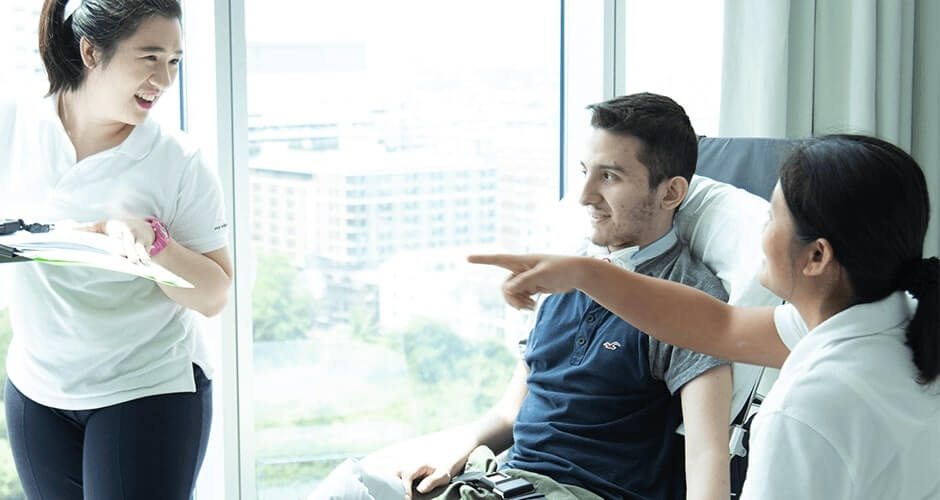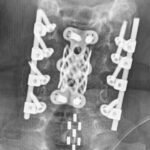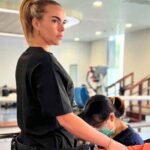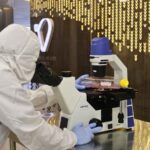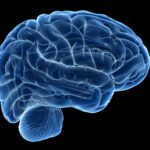Double epidural stimulator recipient Edward was a returning patient to Verita Neuro when we interviewed him. The first treatment was for upper body function and a small Neuro Stimulator was implanted for his upper body function at the cervical level. With his second treatment, he received the same stimulator for his lower body function.
Edward had an incomplete spinal cord injury with a little bit of upper body function before his first spinal cord stimulation treatment, which he had about one year ago in Thailand. He had a complete loss of volitional motor control in his lower limbs. In his interview with Dr Nasir, he looked into his progress in the last year, and reviewed his recovery since his second treatment in Mexico.
Edward had an incomplete spinal cord injury with a little bit of upper body function before his first spinal cord stimulation treatment, which he had about one year ago in Thailand. He had a complete loss of volitional motor control in his lower limbs. In his interview with Dr Nasir, he looked into his progress in the last year, and reviewed his recovery since his second treatment in Mexico.
All the therapists here, they're very innovative, they care about you, they like to think outside the box and dedicate their time to your therapy.
Edward
Please can you introduce yourself?
My name is Edward Lopez, I'm 23. I was injured in April 2018 in the USA and went to my rehab hospital in Los Angeles. The attitude in the hospital was ‘Well, let's see how much you recover, and then build a lifestyle’ and I thought ‘What if I don't recover naturally, aren't there any treatments or anything that I can do? Any surgeries, so I can improve?’ They said ‘We don't know about that, it's not available yet.’ So I started searching for myself and then I found out about epidural stimulation and what it can do for people, looking at videos, looking at journals. Then I saw that it's available in Thailand commercially so that's when I started getting in contact with Verita Neuro about a year ago, to see if they could put it in my cervical spine, because I know that wasn't done before. Well, it was done, but not many times.
Edward, you are basically the third patient in the world to receive double epidural stimulators for spinal cord injury. What are your feelings and what results did you see from the first treatment?
I will feel excited. It’s in Mexico and the flights are only like three hours and I have family here. I’m also Mexican and I speak Spanish. Then also I am excited about being able to move my legs - I know that legs are a little easier than arms because it's more just bend and extend with the legs. I already know the people here at [Verita Neuro] like Dr. Nasir and the therapists, so I’m very confident with them. I know that they'll be able to help me with the mapping and the surgery and everything so I really feel very comfortable here. I felt that for the first surgery on my arms, I really saw a lot of progress with it, being able to hold my left arm in the air. When I bend it I’m able to grab and drop stuff and I’m seeing a lot more strength. I'm looking forward to stepping and walking over the next couple of months after the double epidural stimulator implantation.
Before you decided to go for your first treatment in Thailand, did you have any doubts in your mind?
I wasn't too skeptical, because I did my own investigation, I saw testimonials and looked at reviews outside of the website. So I knew that it was very real - I think my parents were a little skeptical about it but after they did their independent research, they saw that it was real. After talking to Dr. Nasir on the phone and getting into contact with former patients, then they got more comfortable with going there. Still a little nervous because it's a whole other country but if anybody wants to like ask me questions, on my Instagram you can see that it's real, it's not like a scam or anything. Because some people might feel nervous going to another country for surgery, paying some money but they just need to do the research and then look at reviews.
What are the major differences or you know, similarities you would like to highlight in terms of your treatment for the first stimulator and the second stimulator?
Well, I was comfortable going into surgery the first time and so the second time I wasn't nervous at all because I know that the doctor, his name is Dr. Rodrigo, he is one of the best doctors at implanting the spinal cord stimulator for pain in the Americas. So he's very professional and implanting the stimulator for movement is similar so I wasn't worried at all. My scar healed well, and I didn't have any negative side effects. As for the mapping, it went well. All the therapists here, they're very innovative, they care about you, they like to think outside the box and dedicate their time to your therapy. They're pretty smart and they understand how the stimulator works and how mapping works. So everything went fine.
Did you feel well informed and like the communication was good?
No, if I had any questions, I could always ask the doctor or a therapist or Dr. Nasir. I had no problem with communications. I had just a little problem with my bed but they were able to give me a better one the next day. Any problems I had, I just always talked to the team and they were there to help me with any problems and look for solutions.
Ultimately, what are your goals from the double epidural stimulator implantation, from your point of view?
I’m very ready! Before my injury, I did martial arts so I love working out. I love the feeling of being sore, being tired, or feeling my muscles. So that's no problem, I can always put in the work, and I love working out. As for the future, well I want full recovery. You know, I don't care how many years it takes or how long it's gonna take, that's the end goal. I feel that the stimulator is very important to my recovery. I also got stem cells and exosomes treatment so I'm really optimistic about what that might do and I look forward to getting more in the future.
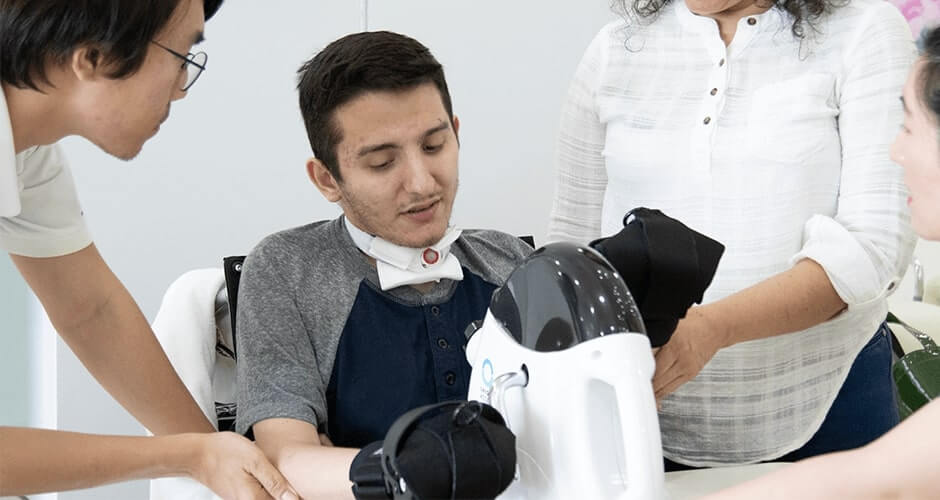
You have been working with the stimulator for a year now, do you feel like it has improved your quality of life?
Yeah, when I went to Thailand before I had really bad scoliosis, and then doing the trunk control exercises my scoliosis got better thanks to the stimulator. Being able to move around a lot loosened up my chest and helped me with my cough and quality of life, yeah. Because there were some days when I couldn't use my stimulator there. They were also boring because I was just sitting there doing nothing not being able to exercise, get my muscles stronger, and develop more muscle on my body.
Can you walk us through a typical day here for you? What kind of activities do you go through? And what does it feel like from a patient’s point of view?
So I wake up around 8 am, have breakfast, and then I start mapping, which ends at 11. During that time, I'm either in bed or in the wheelchair, and then I'm doing the exercises with the therapists. Then after that, I eat lunch and get ready for either PT or therapy, then mapping at four, from four to six. Then I eat more, and watch TV or go to sleep. The whole time, throughout the exercises, the therapists are dedicated to me. They're always helping me move my legs and seeing what works and what doesn't work. The next day I just repeat the process and I noticed my legs get strong.
What kind of improvements did you see, just a short list of improvements, from the cervical stimulator?
Alright, in C5-C4 I don't have my rotator cuff but I'm able to open and close my hand, bend my left arm, straighten both my arms and flip my wrists or push my palm down, and basically hold my arm to my chest in the air not enough to feed myself yet. But I think for people that are maybe like C6 or C5 that can lift the arm up it will help them a lot. Because they can reach out and open and close which will help a lot. Also for C4 patients like me, I saw a lot of improvements. And since the double epidural stimulator implant, in the leg so far, there's a lot like being able to point my toes, bend my leg or extend my leg.
Is there any message you would like to give to spinal cord injury patients?
I think, look at the testimonials to see what to expect. Also, try to do therapy or hospital if possible before you come so that your muscles are strong. Also, put electrodes on your body to help out with your muscle strength. If you're going for the legs, you got to check for osteoporosis. I have osteoporosis so I'm not able to stand yet. I'm working on it - maybe in three months, I'm going to come back to Mexico, whenwhere I can stand. So definitely get the scan for that. If you do have osteoporosis you can work on it with medicine and treatment and stuff like that. Be ready for the workouts because they can be tiring. But it's fun. It's nice to see your body moving.
I think a lot of people have a lot of doctors telling you that you have to find out how to live the rest of your life injured as you are. So if you really want to improve your life, and have a chance at a better life, then you should get epidural stimulation. It'll help you. The people that get it I think all of them are fighters because they're willing to go to another country to get another surgery and pay money, just for a chance to get better. So, I think everybody that's going already has the attitude of ‘No, I'm not going to do what the doctors tell me’ So…keep fighting!
I think a lot of people have a lot of doctors telling you that you have to find out how to live the rest of your life injured as you are. So if you really want to improve your life, and have a chance at a better life, then you should get epidural stimulation. It'll help you. The people that get it I think all of them are fighters because they're willing to go to another country to get another surgery and pay money, just for a chance to get better. So, I think everybody that's going already has the attitude of ‘No, I'm not going to do what the doctors tell me’ So…keep fighting!
The above is not a verbatim transcript of Edward’s interview and the exact wording and order of words have been edited to be read more easily. You can watch the full interview on our YouTube channel.
